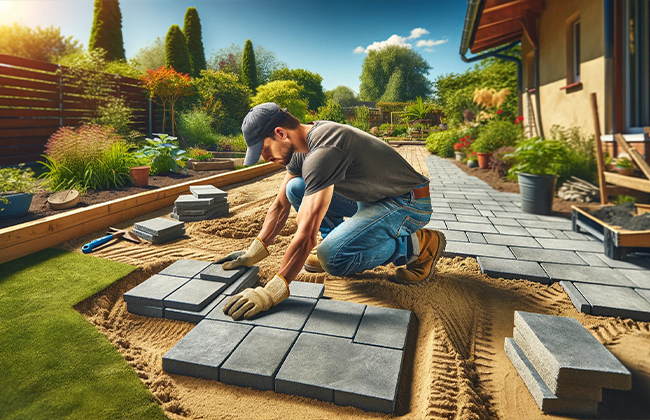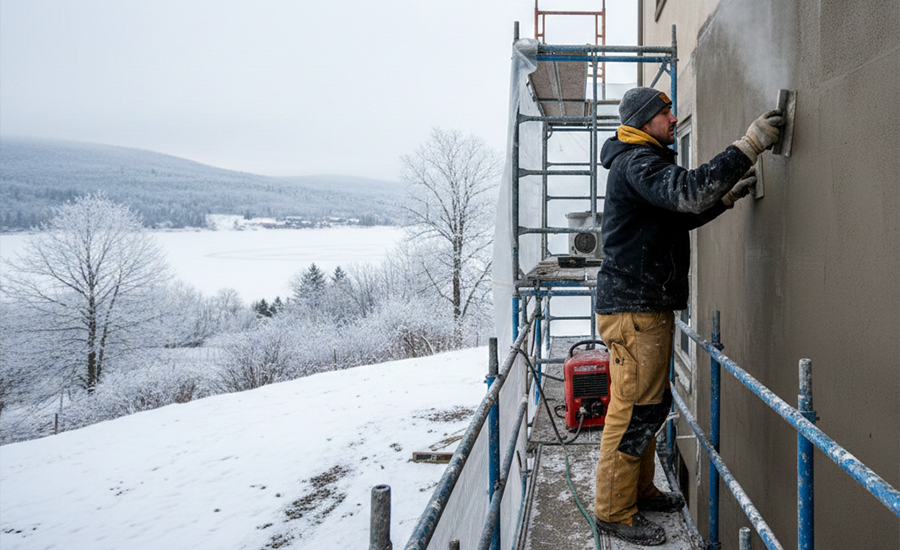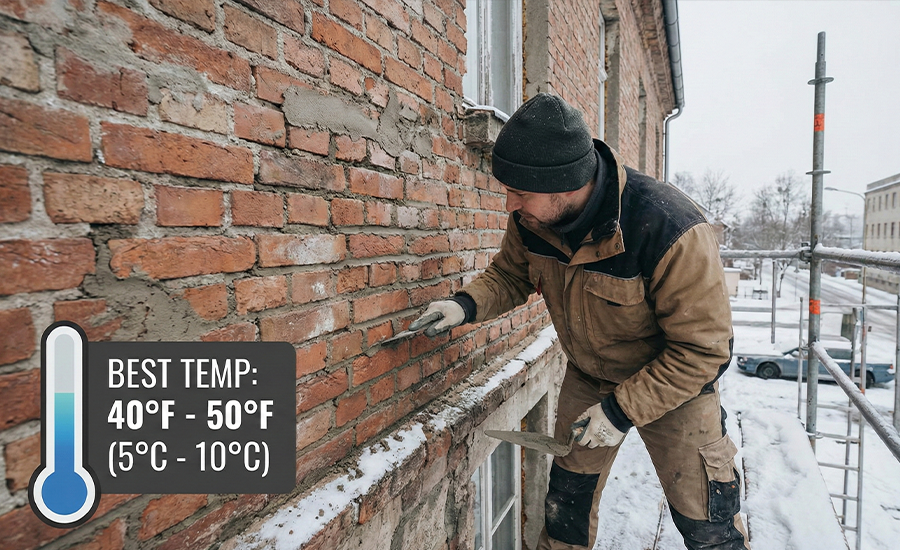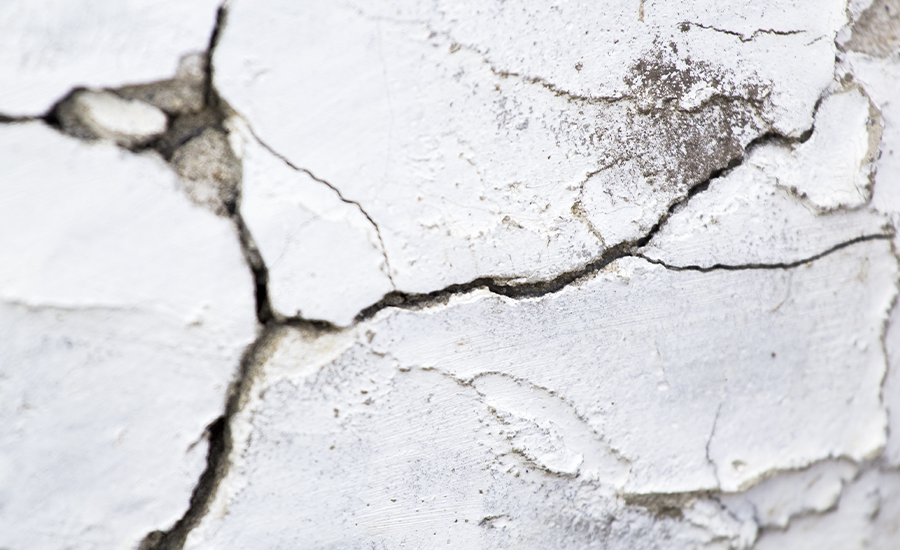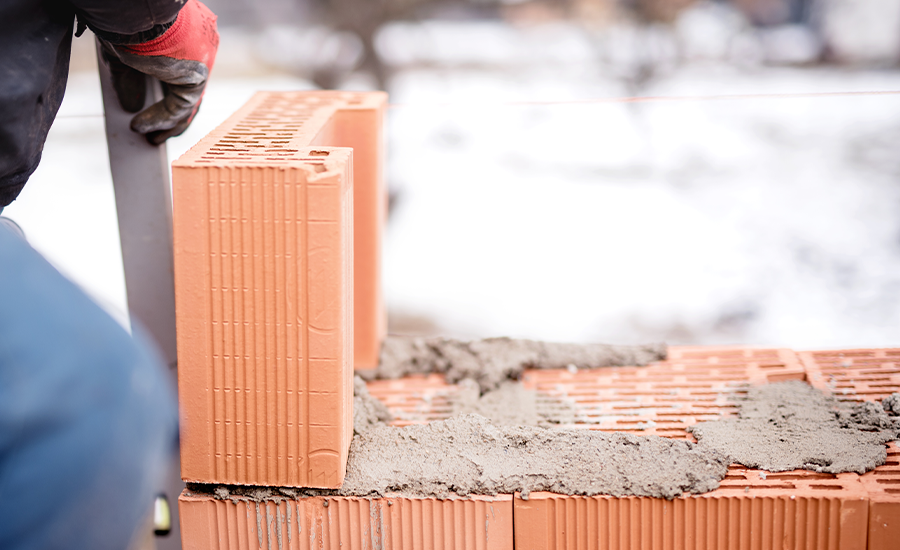Are you planning to revamp your outdoor space with some beautiful paving? Whether it’s creating a charming walkway, a robust driveway, or a cozy patio, knowing how to install paving can save you money and give you a sense of accomplishment. In this comprehensive guide, we’ll walk you through the essential steps of how to install paving, ensuring you can tackle this project with confidence.
Understanding the Basics of Paving
Before we dive into the installation process, let’s chat about what paving really involves. Essentially, paving is the method of laying out materials like stones, bricks, or concrete to create a solid, flat surface. It’s like building a jigsaw puzzle on the ground, but instead of fitting together small pieces, you use larger, durable materials. The most commonly used materials are concrete pavers, bricks, and natural stones.
Now, each type of material has its own perks and quirks:
Choosing Your Paving Material
- Concrete Pavers: These are your go-to if you’re looking for something that’s both wallet-friendly and versatile. Concrete pavers come in a plethora of colors and shapes, making them perfect for customizing your project. Whether you’re paving a small garden path or a grand driveway, these pavers adapt to your vision with ease. Plus, they’re relatively easy to install, which is great if this is your first DIY paving project.
- Bricks: There’s something undeniably charming about brick pathways and patios. If you’re aiming for that timeless, classic look, bricks are your best bet. They fit well in historic or traditional landscapes but can also add a rustic touch to more modern settings. Though they might not come in as many colors as concrete pavers, their natural red and brown hues provide a warm, inviting feel.
- Natural Stone: For those of you looking for the wow factor, natural stone is where it’s at. From bluestone and granite to slate and limestone, these materials bring a piece of nature’s uniqueness to your doorstep. Each stone boasts distinct patterns, textures, and colors, no two installations are exactly alike. However, keep in mind that all this beauty and durability comes at a higher price point, and some stones may require more maintenance than others.
Each of these materials has something special to offer, so think about what fits your lifestyle and your home’s aesthetic best. Ready to get your hands dirty? Great! Let’s make sure we pick the material that not only looks good but also fits your budget and maintenance willingness.
Planning Your Paving Project
Getting your paving project off to a good start means doing a bit of homework first. You’ve got to plan carefully because, let’s face it, you don’t want to end up halfway through your project only to realize you’ve bitten off more than you can chew. So, start by figuring out exactly where you want your new path, patio, or driveway to go. Consider how it will blend with your home’s current layout and style—consistency is key to a stunning result!
Measuring and Marking the Area
Now, grab a tape measure because it’s time to get specific about size. You’ll need to calculate the total square footage of the area you’re planning to pave. This step is crucial because it tells you how much material you’ll need to purchase. No one likes making a mad dash to the store mid-project, right?
Here’s a tip: use stakes and string to outline the area you plan to pave. This not only helps in visualizing the space but also ensures you stay on track when you start laying down materials. Make sure to double-check your measurements. A little extra time spent here can save you a lot of hassle later.
Choosing the Right Tools and Materials
Alright, it’s shopping time—but we’re not looking for shoes; we’re hunting for the right tools and materials for our paving job. Here’s what you’ll need:
Tools Needed:
- Shovel: For digging and moving material.
- Tamper: This helps compact your base material, which is vital for a stable pave.
- Level: To make sure your surface slopes correctly for drainage.
- Rubber Mallet: For tapping pavers into place without breaking them.
- Chisel: For cutting pavers to fit corners and edges.
Materials Required:
- Paving Stones: Choose based on your design preferences and load requirements.
- Sand: This is used for the base and for filling in the joints between pavers.
- Crushed Stone: The foundation of your project, providing a stable base.
- Edging Material: To keep everything neatly in place.
Gathering your materials and tools beforehand means you won’t have to stop mid-project. Plus, who doesn’t feel more confident when they’ve got everything lined up and ready to go?
By preparing thoroughly, you ensure that the installation process will be as smooth as possible, letting you enjoy both the process and the results. So, let’s get those materials ready and set the stage for a successful paving project!
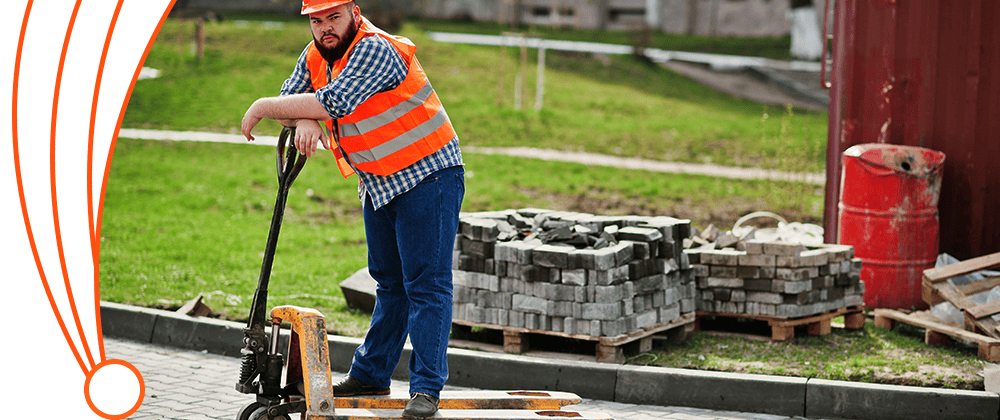
Preparing the Site
When it comes to paving, the foundation you lay is just as important as the materials you choose. A well-prepared site is crucial for ensuring that your paving will stand the test of time. So, let’s roll up our sleeves and set the stage for a paving job that’s built to last.
Excavation
First things first, you need to clear the area. Start by removing the topsoil and any grass, plants, or debris. This is where your shovel is going to get a good workout! You’ll want to dig down to the required depth, which is typically about 7-9 inches for walkways and patios. This depth allows enough room for both the base material and the paving stones, ensuring that everything fits perfectly.
Make sure to dig consistently, keeping an eye on the depth across the entire area. Uneven excavation can lead to a shaky project, and we certainly don’t want that!
Base Preparation
Once you’ve dug to the right depth, it’s time to start building the base. This stage is super important because it supports all the fancy stones you’re going to lay on top. Here’s how to do it:
- Spread Crushed Stone: Pour crushed stone into the excavated area. This type of material is ideal because it compacts well and allows for excellent drainage—key to avoiding water pooling under your beautiful new pavers.
- Compact the Base: Using a tamper (this could be a hand tamper or a mechanical plate compactor, depending on the size of your project), compact the crushed stone. This process is vital as it helps to create a solid, even base. You might need to add more stone and compact several times to ensure the base is firm and level.
- Check for Level: Regularly check that the base is level with a long spirit level. Pay special attention to the grading. You’ll want a slight slope away from any buildings for proper drainage—typically a drop of about 1 inch for every 4 feet.
- Add Sand Layer (Optional): Some projects benefit from a layer of fine sand over the crushed stone for additional leveling and to help set the pavers in place. If you choose to add sand, smooth it over with a rake, and then compact it as well.
Setting up your site with care and precision ensures that everything that follows goes smoothly. A solid base not only supports your pavers but also prevents major issues like shifting or cracking down the road. Now that your base is ready, you’re all set to start laying those pavers and seeing your vision come to life!
Laying the Pavers
This is the exciting part where your project really starts to take shape! Laying the pavers is like putting together a puzzle, and seeing your design come to life can be quite rewarding. Here’s how to make sure you do it just right:
- Choose Your Pattern: Before you start laying pavers, decide on the pattern you want. Popular choices include herringbone, basketweave, and the straightforward running bond. Each pattern offers a different aesthetic and structural benefits, so pick one that matches your style and the function of the paved area.
- Start Laying the Pavers: Begin at one corner or edge of your site and lay the pavers down one by one. Place each paver carefully to follow the pattern you’ve chosen, keeping them as close to each other as possible. This isn’t just about aesthetics; tightly spaced pavers help add strength to the pavement.
- Cutting Pavers: Not all pieces will fit perfectly, especially around edges and corners or if you have a curved layout. You’ll likely need to cut some pavers to size. You can use a chisel and hammer for rough breaks or a power saw with a diamond blade for cleaner, more precise cuts. Always wear safety goggles and gloves when cutting pavers to protect yourself.
- Check Your Work: As you go, use a level to check that the pavers are flat and even. Adjust as necessary by tapping them gently with a rubber mallet or adding and removing sand underneath.
Securing the Pavers
Once all your pavers are in place, it’s time to make sure they stay that way. Here’s what you need to do to secure them:
- Snug Fitting: Double-check that the pavers are snug against one another. Gaps can lead to movement and instability over time. If you find any loose pavers, gently tap them into place with a rubber mallet.
- Bedding Down: Use your rubber mallet to bed the pavers down into the base. This ensures they are well seated and won’t shift under foot traffic or weather conditions. A well-bedded paver is less likely to crack or rise.
- Edging: Installing sturdy edging around the perimeter of your paved area can significantly improve the longevity of your project. Edging holds the pavers in place and prevents them from spreading outward and becoming loose. Materials like metal, plastic, or additional pavers can be used for this purpose.
- Sweep Sand into the Joints: Once all the pavers are securely in place, sweep fine sand over the surface, allowing it to fill in the joints. This sand acts as a stabilizer and keeps the pavers from shifting. Water it down to help settle the sand, and then add more if necessary.
Following these steps ensures that your pavers are laid and secured properly, giving you a beautiful and durable paved area that you’ll enjoy for years to come. Now, step back and admire your handiwork—it’s time to enjoy the results of your hard labor!
Finishing Touches
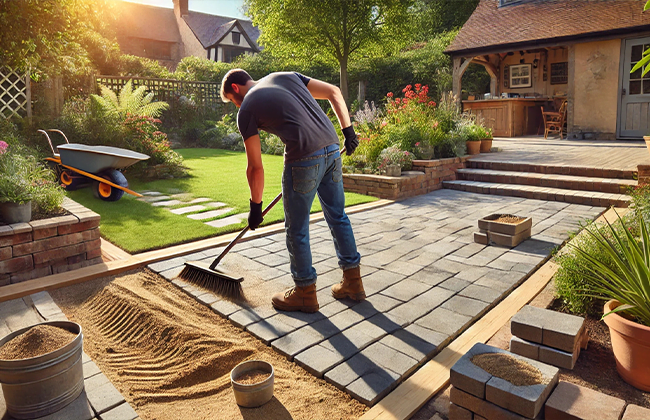
Alright, you’ve laid all your pavers, and your project is nearly complete! Now, let’s give it the finishing touches to ensure everything is locked in place and looking sharp. This final step is crucial for the durability and appearance of your paving.
1. Sweeping Sand into the Joints:
Grab a broom and start sweeping fine sand over your pavers. This sand is more than just filler; it plays a key role in keeping your pavers stable. It seeps into the joints between the pavers, filling up any gaps. Make sure to spread the sand evenly across the entire surface. This might seem like a simple step, but it’s essential for the next part.
2. Tamping Down the Pavers:
Once your joints are filled with sand, it’s time to lock everything into place. Using a tamper, gently but firmly tamp down the pavers. This helps the sand settle deeper into the joints and also ensures that your pavers are bedded firmly. Tamping helps prevent the pavers from shifting underfoot and extends the life of your pavement.
3. Check for Consistency:
After tamping, take a step back and look over your work. You want to make sure the surface is even and the lines are straight. If you spot any pavers that look out of place or slightly higher than the others, don’t hesitate to adjust them. A rubber mallet can be used to gently tap them into a better position.
4. Final Sand Sweep:
Once you’re satisfied with the layout and stability, it’s time for one last sweep. This ensures that all the joints are completely filled. In some cases, especially if you’re in a wet climate, you might consider using polymeric sand. This type of sand contains additives that, when activated with water, bind the sand particles together, creating a firm bond that resists weeds and prevents insect infestation.
5. Watering the Pavers:
Lightly spray the surface with a hose. This helps to settle the sand and activate the polymeric sand, if you’ve used it. Be careful not to wash away the sand from the joints. A gentle mist is all you need.
6. Allow for Setting:
Give your new pavement time to set before you start using it. This usually means keeping foot traffic and heavy items off it for at least 24 hours. This patience pays off, ensuring your pavers won’t move as they begin their long life as part of your home’s landscape.
And there you have it! Your paving project is now complete. Take a moment to admire your hard work—it’s not just a functional part of your home but a reflection of your effort and creativity. Now, get ready to enjoy your new outdoor space, whether it’s for a cozy backyard barbecue or just enjoying a sunny day. Well done!

Maintenance and Care
Now that you’ve got your new paved area all set up, let’s talk about keeping it looking great. Good news—maintaining your paving is pretty straightforward. With just a little bit of effort, you can ensure it stays beautiful and functional for years to come. Here’s how you can take care of your paving:
1. Regular Sweeping:
Start with the basics. Regular sweeping helps remove debris, leaves, and dirt that can accumulate on the surface. This is especially important after storms or in the fall when leaves are more likely to pile up. Keeping the surface clean not only makes it look better but also prevents materials from getting ground into the pavers and staining them.
2. Rinsing with Water:
Every now and then, give your paving a good rinse with a hose. This helps wash away any particles that sweeping didn’t get. It’s a simple step that can make a big difference in maintaining the appearance of your pavers. If you notice any stubborn stains, you might use a mild detergent and a stiff brush to gently scrub them away.
3. Weed and Moss Control:
No one likes weeds or moss popping up between their beautiful pavers. To prevent these unwanted guests, make sure to fill the joints properly with sand, as it helps block weed growth. If you do spot weeds or moss, pulling them out by hand or using a weed killer designed for pavers can be effective. Just be sure to follow the instructions carefully to avoid damaging your paving.
4. Sealing the Pavers:
Consider sealing your pavers every few years. Sealer provides a protective layer that not only enhances the color of your pavers but also resists stains and reduces weed growth. There are different types of sealers available, so choose one that suits your specific type of paving material and the climate you live in.
5. Check for Movement or Settling:
Every once in a while, take a walk over your paving and check for any pavers that may have shifted or settled. This can happen due to weather changes or natural settling of the ground. If you find any loose or uneven pavers, you may need to remove them, adjust the base material underneath, and re-lay them.
6. Avoid Chemical Damage:
Be mindful of what gets on your pavers. Harsh chemicals like de-icing salts can damage pavers over time. Try to use alternatives that are safer for stone and concrete, and always rinse off any chemicals as soon as possible.
By following these simple maintenance steps, you keep your paved area not only functional but also as inviting and attractive as the day it was completed. Regular care lets you enjoy your outdoor space to the fullest, whether you’re hosting a backyard barbecue or just enjoying a quiet afternoon outdoors.
Conclusion:
Now that you know how to install paving, you’re ready to start your project and enjoy the results for years to come. If you feel the task is beyond your DIY skills or if you’re looking for impeccable results, consider hiring a professional contractor. For expert paving services, feel free to contact us at (+1) 917-355-8556. Whether it’s a new installation or revamping an existing one, our team is here to help!
FAQs:
Q: What do I need to know before I learn how to install paving?
A: Before you start to install paving, it’s crucial to choose the right materials and design for your space. Consider the load requirements and the aesthetic you want to achieve to ensure longevity and appeal.
Q: How long does it take to install paving?
A: The time it takes to install paving can vary based on the size of the area and the type of materials used. Typically, preparing the site and laying the pavers takes a few days to complete.
Q: What are the essential tools for learning how to install paving?
A: Essential tools to install paving include a shovel, tamper, sand, paving stones, and a level. Each plays a pivotal role in ensuring a smooth and durable finish.
Q: Can I install paving over an existing surface?
A: Yes, you can install paving over an existing surface, but it requires proper preparation. Ensure the base is stable and even before beginning to install paving.
Q: What maintenance is required after I install paving?
A: After you install paving, regular maintenance includes sweeping, occasional washing, and checking for any shifts or cracks. This keeps your paving in top shape and prolongs its lifespan.



